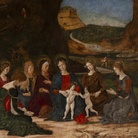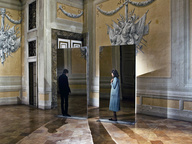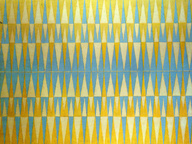Liu Xia. The silent strength

Liu Xia. The silent strength
From 25 Settembre 2015 to 31 Ottobre 2015
Turin
Place: Raffaella De Chirico Arte Contemporanea
Address: via Giolitti 52
Times: Tuesday - wednesday 14 - 19; Thursday - friday - saturday 11 - 19. On others by appointment
Responsibles: Guy Sorman
Ticket price: free entrance
Telefono per informazioni: +39 011.83.53.57
E-Mail info: info@dechiricogalleriadarte.it
Official site: http://www.dechiricogalleriadarte.com
After the Columbia University in New York City, the museums Galeria Cypriana Majernika in Bratislava and Martin-Gropius-Bau in Berlin and the DOX Centre for Contemporary Art in Prague – Raffaella De Chirico presents a selection of thirteen photographs of Liu Xia – a Chinese artist, photographer and novelist – inside the project De Chirico & Udovich Con-Temporary Art.
Liu Xia is one of the most remarkable artists from China and she is also the wife of Liu Xiaobo, Nobel Peace Prize Laureate in 2010. Born in Beijing in 1959, Liu Xia developed her talents as artist and writer. In the relatively liberal 1980s, she was an active member of the lively art scene that flourished in Beijing which at the time was experimental and beginning to open up to the world. It was then that she fell in love with the controversial young college professor and intellectual Liu Xiaobo.
Her association with her husband has cost Liu Xia the right to display and publish her creative work that has been banned in China since 1989. Furthermore, when it became known that Liu Xiaobo had been awarded the Nobel Peace Price, she was placed under house arrest without any legal basis.
Using only black and white imagery, Liu Xia’s photography is rooted in calligraphy, the historical source of all the plastic arts in China. It is with these “Chinese shadows” that she describes both the national renaissance and the repression of contemporary China even if the political contextualization is not explicit. Strange dolls that Liu Xia calls her 'ugly babies' roam the countryside of Beijing; these creatures are intended to escape the incomprehensible censors, representing the human condition in China. By presenting the dolls, Liu Xia both reveals and hides, each doll telling a story.
From the artistic point of view, the so called 'ugly babies' strongly refer to the freakish aspect of Maurizio Cattelan’s mannequins and recall to their evocative force and polysemous lectures; impossible not to think to Ai Weiwei and his similar dissidence. The greater difference is that Ai Weiwei, with his violently media image, has been able to become himself the artwork by reaching the attention of all the world while the same has not been possible for Liu Xia.
"You look at these photos and immediately understand that they are Chinese even if there is nothing Chinese such as landscapes of China. It is the aesthetic black and white dimension which is rooted in the Chinese artistic and calligraphic tradition" – says Mr. Guy Sorman, the French curator who has removed the copies from the regime and obtained Liu Xia’s approval to exhibit themes around the world.
On show the exhibition copies while on sale there will be a limited edition of 7 images, size cm 60x60 and cm 100x100.
Liu Xia is one of the most remarkable artists from China and she is also the wife of Liu Xiaobo, Nobel Peace Prize Laureate in 2010. Born in Beijing in 1959, Liu Xia developed her talents as artist and writer. In the relatively liberal 1980s, she was an active member of the lively art scene that flourished in Beijing which at the time was experimental and beginning to open up to the world. It was then that she fell in love with the controversial young college professor and intellectual Liu Xiaobo.
Her association with her husband has cost Liu Xia the right to display and publish her creative work that has been banned in China since 1989. Furthermore, when it became known that Liu Xiaobo had been awarded the Nobel Peace Price, she was placed under house arrest without any legal basis.
Using only black and white imagery, Liu Xia’s photography is rooted in calligraphy, the historical source of all the plastic arts in China. It is with these “Chinese shadows” that she describes both the national renaissance and the repression of contemporary China even if the political contextualization is not explicit. Strange dolls that Liu Xia calls her 'ugly babies' roam the countryside of Beijing; these creatures are intended to escape the incomprehensible censors, representing the human condition in China. By presenting the dolls, Liu Xia both reveals and hides, each doll telling a story.
From the artistic point of view, the so called 'ugly babies' strongly refer to the freakish aspect of Maurizio Cattelan’s mannequins and recall to their evocative force and polysemous lectures; impossible not to think to Ai Weiwei and his similar dissidence. The greater difference is that Ai Weiwei, with his violently media image, has been able to become himself the artwork by reaching the attention of all the world while the same has not been possible for Liu Xia.
"You look at these photos and immediately understand that they are Chinese even if there is nothing Chinese such as landscapes of China. It is the aesthetic black and white dimension which is rooted in the Chinese artistic and calligraphic tradition" – says Mr. Guy Sorman, the French curator who has removed the copies from the regime and obtained Liu Xia’s approval to exhibit themes around the world.
On show the exhibition copies while on sale there will be a limited edition of 7 images, size cm 60x60 and cm 100x100.
SCARICA IL COMUNICATO IN PDF
COMMENTI

-
 Dal 20 dicembre 2024 al 04 maggio 2025
Fermo | Palazzo dei Priori
Dal 20 dicembre 2024 al 04 maggio 2025
Fermo | Palazzo dei Priori
-
 Dal 20 dicembre 2024 al 04 maggio 2024
Gorizia | Palazzo Attems Petzenstein
Dal 20 dicembre 2024 al 04 maggio 2024
Gorizia | Palazzo Attems Petzenstein
-
 Dal 18 dicembre 2024 al 18 dicembre 2024
Venezia | Museo Correr
Dal 18 dicembre 2024 al 18 dicembre 2024
Venezia | Museo Correr
-
 Dal 14 dicembre 2024 al 02 marzo 2025
Palermo | Palazzo Abatellis
Dal 14 dicembre 2024 al 02 marzo 2025
Palermo | Palazzo Abatellis
-
 Dal 12 dicembre 2024 al 23 febbraio 2025
Roma | Palazzo Altemps
Dal 12 dicembre 2024 al 23 febbraio 2025
Roma | Palazzo Altemps
-
 Dal 13 dicembre 2024 al 31 agosto 2025
Roma | Museo dell'Ara Pacis
Dal 13 dicembre 2024 al 31 agosto 2025
Roma | Museo dell'Ara Pacis


